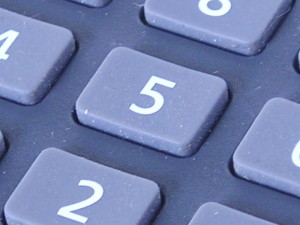Q: I’ve heard that some of those calorie calculators are not correct. I don’t want to eat too much. Is there any 100% method of finding out what my TDEE is? I’ve heard of the RMR testing is that the only way? Didn’t you say that you found maintenance without using a calorie calculator? How would I do that?
A: Yes, you are correct, I did not use a calorie calculator to find my maintenance, as the calcs weren’t as readily available then as they are today. The calculators have simplified things because they let you know ’round about what you should be eating. Using a BodyMedia FITor Fitbit, etc are also known methods for finding a more accurate number. I do feel that the way that I’ve always done it is quite accurate for me, because I am patient and take my time to figure it out, and I’m no longer afraid to eat too much (rather, quite the opposite). I actually use my “old school” method, still today, at least once a year, because it actually raises my metabolism, and I typically end up able to eat more than most calculators allow.
So I usually only recommend this method to people that I work with privately, as I can monitor them more closely, and push them to keep going when they feel they have “hit” maintenance sooner than I feel that they have. This method is also MUCH slower than the “calculate and jump in” method, and most people are in a hurry to get things moving. It also takes much more mental focus to keep going after each increase. This is because it will depend on how sensitive your body is and how it reacts to the initial calorie increase. Finding TDEE without a calorie calculator basically involves slowly upping your calories until you hit a “plateau,” riding it out, then upping again..and again…and again, until you start seeing “true” gains. This is a very lengthy process, and I use my bulking period as my time to do this, as I have more time to dedicate to it then.

We typically recommend jumping right in, if you can take it, mentally. However, I just recently did this again this fall, and took it reaalllyyy slow, lol. I like to use each month in my bulk as my measuring tool for cals, so what I did this time was (because I went into a deficit for a couple months in the summer time to “cut” a bit more, and had to come back up to maintenance for the holidays, lol – def didn’t wanna miss out on that good eating!) So I basically ate in a slight deficit over the summer, and then when I started STS in the fall, I used each Meso as a new cal level. So I was basically pyramiding my cals along with STS, in order to get maximum benefit from each month’s phase. Here’s part of a message, that I wrote to someone during that time (I was upping main calorie intake, yet also “eating back” exercise cals):
“Right now I’m at my highest cals (2020 before exercise, today was 2400!), Meso 2 I was about 200 lower, and Meso 1 was at the end of my cut, so I was around 1700 (before exercise). I would slowly up the cals each week until I was at the new cal level. Not saying that you have to take that long, lol, but just to give you an idea of just how slow you could go…
I would think that it could take up to a month or more, though to really know how your body is responding to the added cals. Some people might get scared off immediately because of a jump in the scale that has nothing to do with the cals. Sometimes you gotta just see it through, in order to know. Case in point: I started upping my cals toward the end of Sep/beginning of Oct. When I look at my weight progress chart, I see that my weight remained pretty steady until Nov. Between 11/12 and 12/2, I was up 2 lbs (I remember distinctly thinking I must have finally hit my max, because that extra 2 lbs was holding strong…until 12/12 when things magically evened out again and I was down 2 lbs again, but eating almost 400 cals more than before. I’m pretty sure I’ve hit my max now, (up 2 lbs again, lol), but I’ll give it a couple more weeks (when I’m on a rest week, so that there’s no extra water from the heavy lifting) before I make my final decision. If I’m still up, then I may cut back down very slightly, and consider it my new maintenance. If I’m gaining, I’ll cut back to the last number I maintained at.”
I hope I answered your question without really answering it, lol. It’s really up to the individual, and how much time you are willing to put into it. Many people have comfort and assurance when the numbers are already figured out for them and they just have to do the eating. Some people are more adventurous and want to test the waters, and others like me just wanna beat the system. Find the method that works for you, but be real with yourself. If you are thinking of not using a calorie calculator because you are wanting an excuse to eat LESS, then stick with the calculators/fitness devices until you are mentally prepared to eat more, or you may undercut yourself. My goal is always to lose weight while eat as MUCH as possible, which is why I choose to use such an experimental method. If you are already fully convinced in the “eat more” path, then this route may be perfect for you, as you seek out your exact numbers, or to push the limits a bit. If you do choose this method, you may just decide to do it in a shorter amount of time if you feel that your body will handle the increase, ok. Many people prefer to just get it over with, and get on track, sooner. Or you may want to take your time. It all depends on what you’re most comfortable with. Because I was already at goal weight, it may have influenced my decision to take my time this go round…That may not be the case for you….
Discover more from Eat More 2 Weigh Less
Subscribe to get the latest posts sent to your email.




I have upped my calories to a new max as of last week. I went from 1500 up to 1800. I did see a jump in weight by 3lbs. I have been building slowly for the past 3 weeks. I went from average of 1500 to now this week averaging around 1800-1900. The increase showed on the scale. Not worried about that much. I calculated my TDEE at 2500 and cut @15% is 2125. Should i go ahead and reach cut 2125 since technically my cut should be where i drop weight right? But also hit my 2500 TDEE before i start cutting. If i do hit 2500 (maintenance) how long do i stay there before i start cutting?
Thanks for answers in advance!
Tilisha
If you’ve been undereating for a while (more than 4-8 weeks), then we recommend you hit TDEE before you cut. This gives your metabolism a break and helps your body to understand where maintenance is supposed to be. If you were undereating you’ll need to eat at TDEE for at least 4-6 weeks depending on how long you ate less (longer duration of low cals = longer reset). You may wanna pick up our free QuickStart guide for the basics of the steps. ;) http://training.eatmore2weighless.com/get-your-quick-start-guide/
You stated you took your time this go around. Is there a way to speed the process up a bit? I don’t mean in half the time….but just jump in with both feet?
Yes. There’s the way most people choose. Going straight up to the # the calcs give. But then you’d have to stay there and ride it out until you finally plateau (and hope the # was right). Another option is to increase by a higher # of cals at a time, each time staying there until you plateau. So if you jumped 50-100 per week instead of per month, or whatever your numbers may be. Either way the process is the same. You give your body as much time as it needs, which is the point. If you find yourself rushing too much, you probably haven’t fully reset.